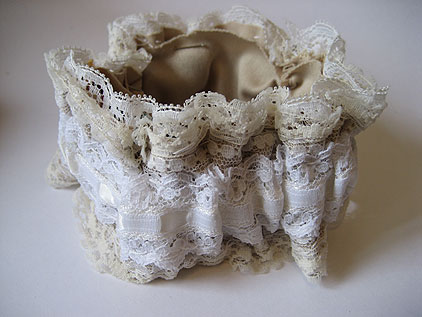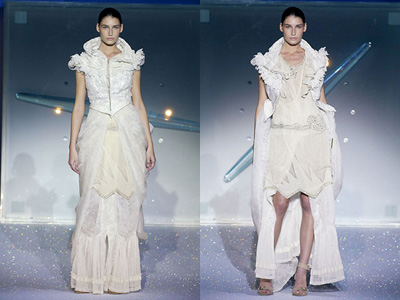 Mashallah Design and Linda Kostowski have created incredibly beautiful garments using an unfolding polygon method that is commonly used by industrial designers to explore dimensional forms through paper models. It's a terrific example of an innovative use of technology that directly informs the aesthetics of the garment. Here's how they describe the process:
Mashallah Design and Linda Kostowski have created incredibly beautiful garments using an unfolding polygon method that is commonly used by industrial designers to explore dimensional forms through paper models. It's a terrific example of an innovative use of technology that directly informs the aesthetics of the garment. Here's how they describe the process:
"Three people are portrayed digitally by scanning their bodies. The output of this scan is a 3D file, which resolution is defined by the amount of polygons, similar to pixels in a bitmap. ... The 3D data is turned into 2D sewing patterns by the use of the unfolding function which is a common tool in the industrial design process to make paper models with, the single fabric pieces and the inner interface which defines the edges are cut out by the help of a lasercutter."
Source via Makezine.



